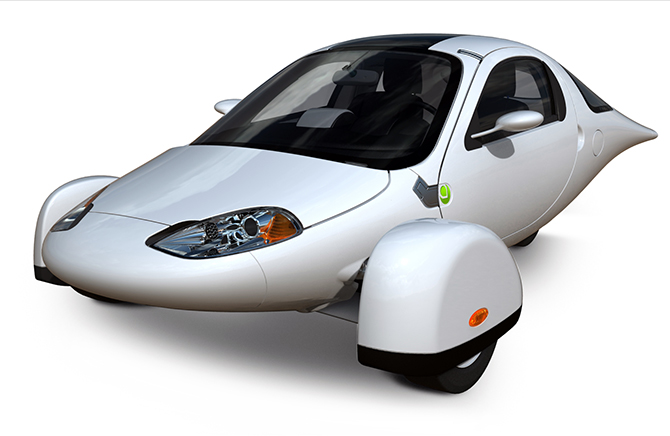 Just over a month ago, Aptera was promising rebirth with Aptera 2.0. The promise will not be kept. Today, the company announced it is closing its doors, effective immediately.
Just over a month ago, Aptera was promising rebirth with Aptera 2.0. The promise will not be kept. Today, the company announced it is closing its doors, effective immediately.
In an email to supporters, president and CEO Paul Wilbur wrote, “We are out of resources.” His letter reveals many details about the behind-the-scenes at the EV start-up, including DOE discussions about development of a plug-in Camry-like sedan. The company was talking to the DOE because it was asking for an ATVM (Advance Technology Vehicle Manufacturing) loan. Aptera was recently given a Conditional Commitment Letter for a $150 million loan but could not find the required matching funds to actually collect the money, even though the company was still raising money this summer.
Speaking of money, this news raises a host of questions, including what happens to the people who put down deposits on an Aptera 2e. Also, will some of the intellectual property that the company developed find a new home elsewhere? Wilbur’s letter seems to indicate that is a possibility:
[pullquote]We remain confident, even as this chapter closes, that Aptera has contributed tech new technologies to build a future for more efficient driving. Through the dedicated staff at Aptera, our board and suppliers we have touched this future. All that remains is for someone to grab it. We still believe it will happen.[/pullquote]
After years of focused effort to bring our products to the market, Aptera Motors is closing its doors, effective today. This is a difficult time for everyone connected with our company because we have never been closer to realizing our vision. Unfortunately, though, we are out of resources.
It is especially disappointing since we were so close…
Aptera executives had been engaged in exhaustive due diligence with the Department of Energy (DOE) pertaining to an ATVM (Advance Technology Vehicle Manufacturing) loan. Our business plan was examined from top to bottom by internal agency representatives, independent consultants and experts in academia. They did an amazing job of vetting us and they tested every possible weakness in our plan. And after nearly two years of discussions, we had recently received a Conditional Commitment Letter for a $150 million loan.
The ATVM loan would have provided funding for the development and commercialization of a five-passenger, midsized sedan (similar to a Toyota Camry) that would be base priced at less than $30,000 and deliver more than a 190 mile per gallon equivalent. The concept of this vehicle had been in place since the very beginning of Aptera, and we had been wholly focused on its development for the last year. The last remaining hurdle was finding new funds to match the DOE loan.
We were so optimistic that the company would move forward that we were in discussions to reactivate a mothballed automotive plant in Moraine, Ohio. In the past months we had engaged with the labor union that operated that facility to discuss the hiring of 1,400 new job opportunities. These jobs would have reactivated talented workers who had been dismissed when the facility was closed.
During the same time, we continued development of our patent-pending composite manufacturing system that enables energy efficient vehicle production by drastically reducing vehicle weight (by as much as 30%) while tripling its strength. This same patent pending system allowed us to finish the surface of our composites without manual finishing and without the high capital cost of a typical automotive paint shop. In all, the process would save nearly $750-million versus a typical volume auto assembly plant start-up.
We were well on the way to satisfying the vision of efficiency on which the company was founded and we are confident that with time and capital we could still achieve our goal. The Aptera formula: aerodynamics plus light weight design (through composites) delivered efficiency of 206 EPA miles per gallon in tests at Argonne National Labs. That wasn’t a simulation; it was real measured performance. Despite that promise of efficiency, this challenged market – specifically large private investors – did not have an appetite to lead an investment for the perceived low volume return of our three-wheeled vehicle. So we reprioritized our product plan to four-door sedans, which also cost us time.
We remain confident, even as this chapter closes, that Aptera has contributed tech new technologies to build a future for more efficient driving. Through the dedicated staff at Aptera, our board and suppliers we have touched this future. All that remains is for someone to grab it. We still believe it will happen.
Paul Wilbur
President and CEO
Aptera Motors
NEWS SOURCE: APTERA



